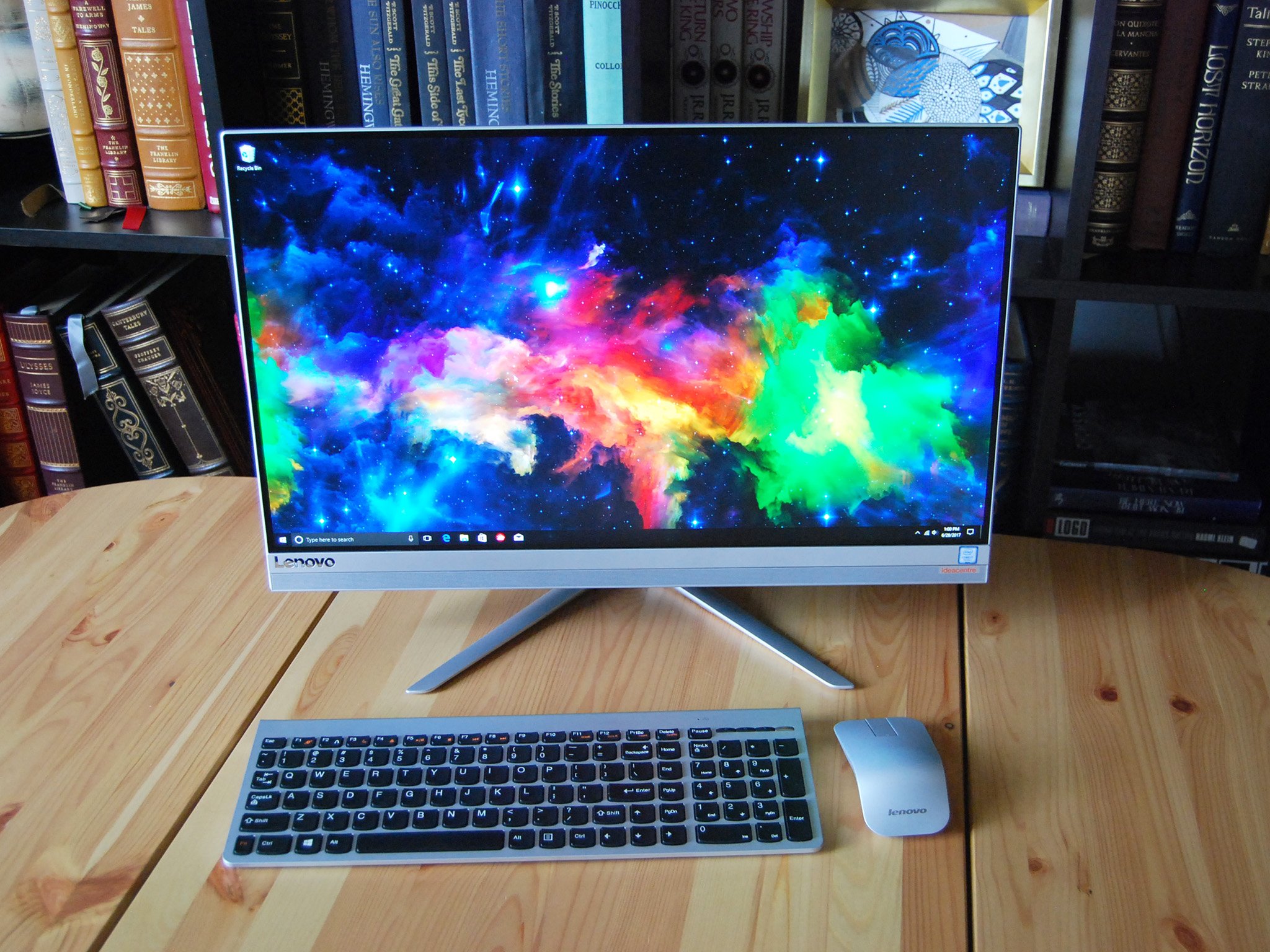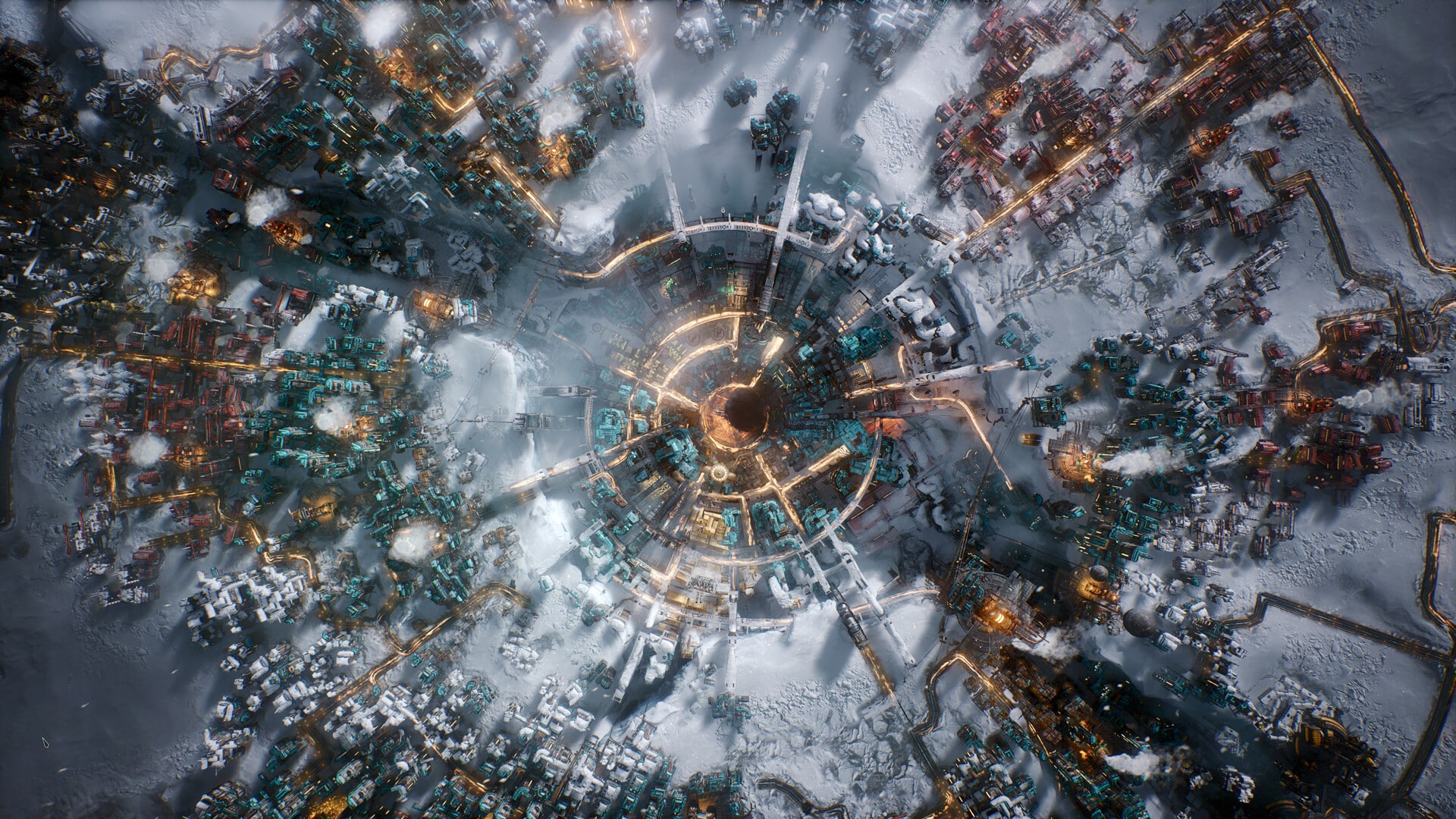When it comes to all-in-one (AIO) PCs, things can get quite expensive quite fast. Just look at Microsoft's Surface Studio. Lenovo understands there's a huge market for budget AIOs, and the IdeaCentre 520S is a result. It has everything you need for under $1,000, but its price really shows in some areas. Let's take a closer look to see if this AIO will find a spot on your desk.
About this review
Lenovo loaned Windows Central a review unit of the IdeaCentre AIO 520S. It has a seventh-generation Intel Core i7-7500U processor with a base clock speed of 2.70GHz, 8GB of DDR4 RAM, and a 1TB hard-disk drive (HDD). This exact configuration is available at Best Buy, but better value configurations can be found at Newegg, starting at about $990.
Lenovo IdeaCentre 520S hardware and tech specs
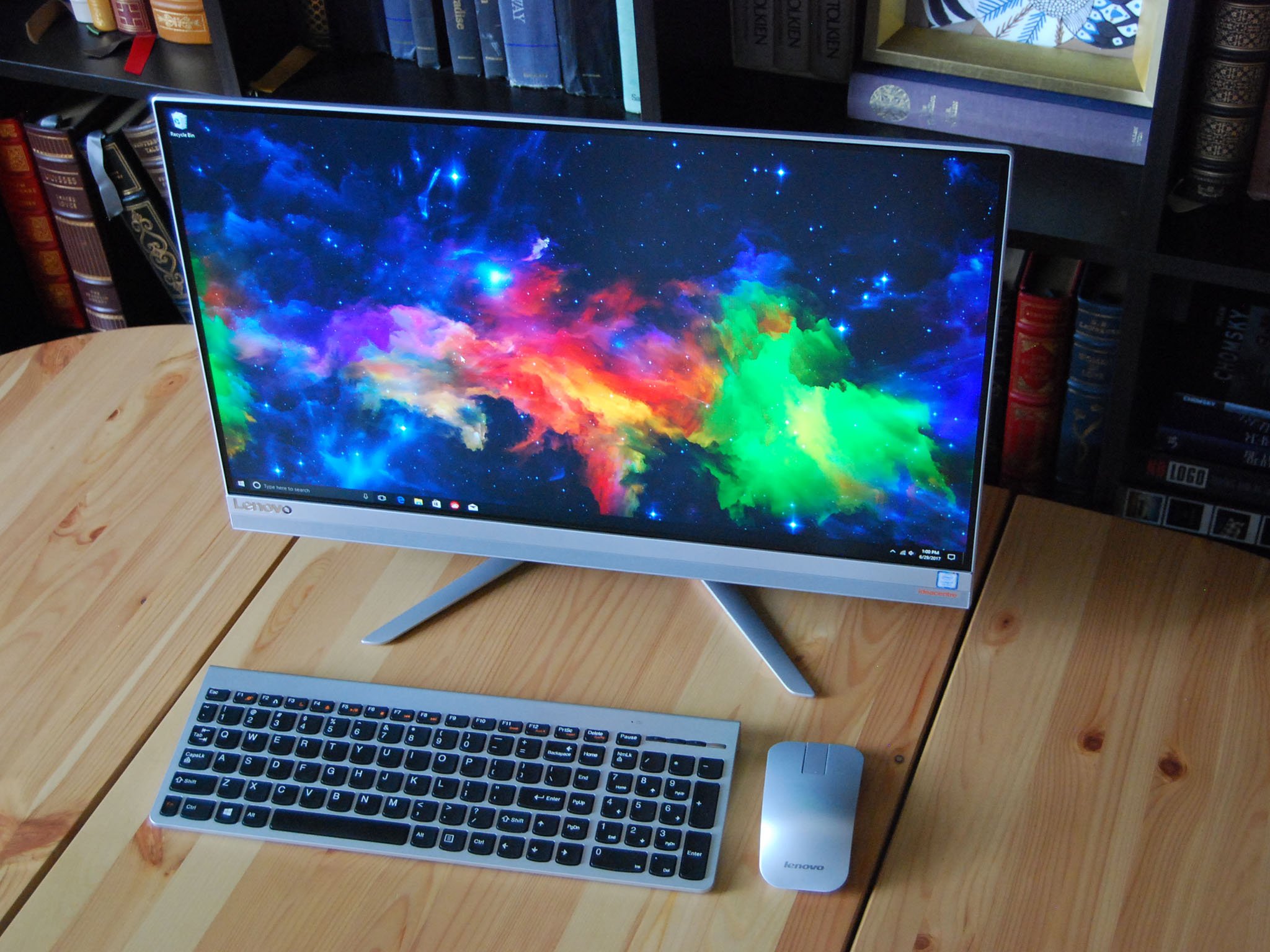
Configurations vary quite a bit depending on country, but here's what seems to be offered in the U.S.:
| Category | Specs |
|---|---|
| Processor | Seventh-generationIntel Core i5-7200UIntel Core i7-7500U |
| Storage | 1TB hard-disk drive5400RPM |
| RAM | 8GB/16GB DDR4 |
| Display | 23-inch FHD (1920 x 1080) IPS, touch, matte |
| Graphics | Intel HD Graphics 620 |
| Ports | Four USB 3.0HDMI 1.4RJ45 Ethernet3.5mm jack |
| Audio | Two 3W speakersDolby Home Theatre |
| Wireless | Intel Dual Band Wireless-AC 3165802.11ac (2 x 2)Bluetooth 4.0 |
| Camera | Front-facing, 1080p |
| Keyboard | Included |
| Mouse | Included |
| Weight | 9.7 lbs (4.39 kg) |
| Dimensions | 12.8 inches x 20.6 inches x 1.6 inches325 mm x 523 mm x 40.6 mm |
| OS | Windows 10 Home |
| Color | Silver |
Slim body
Lenovo IdeaCentre 520S design
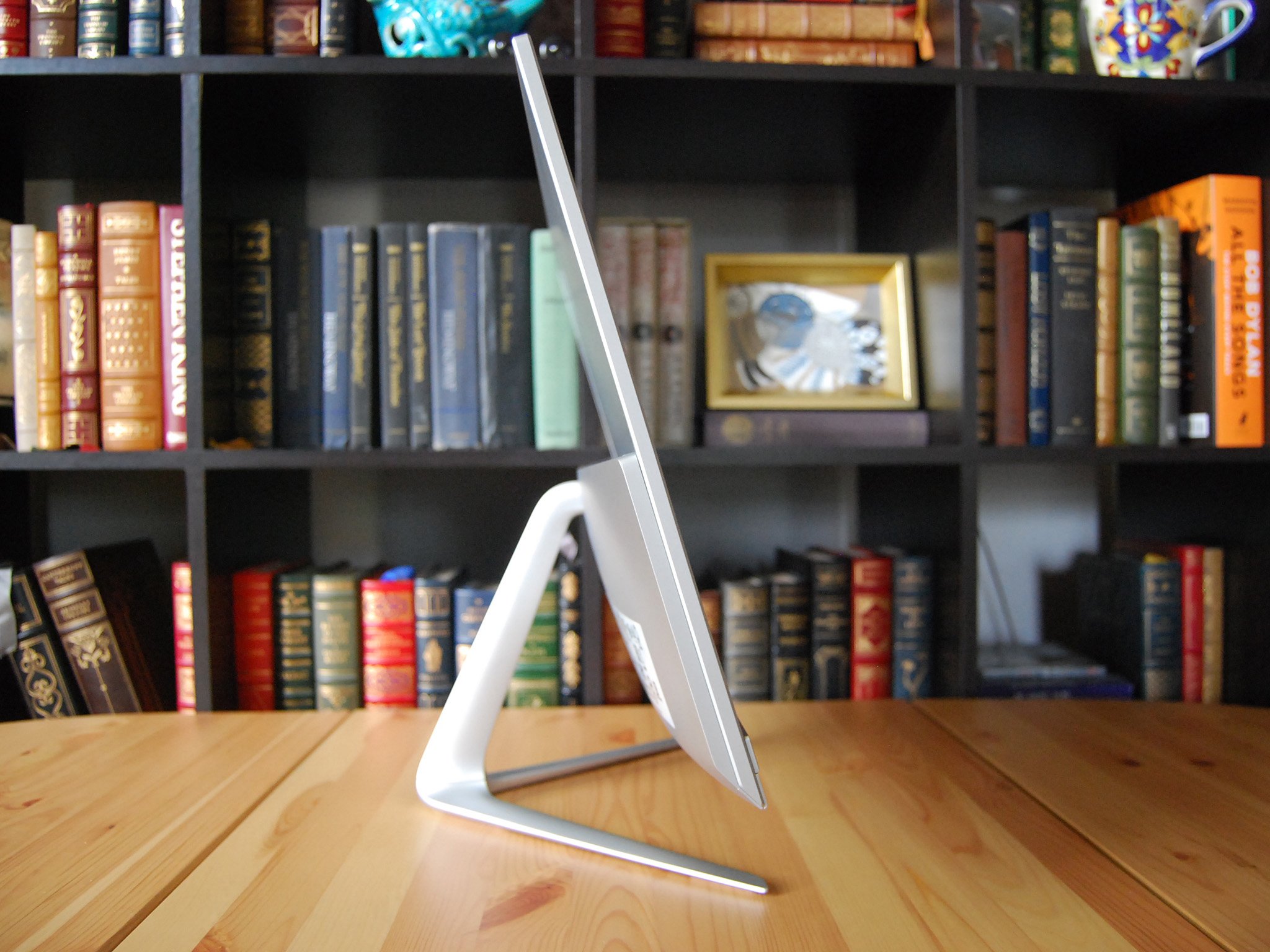
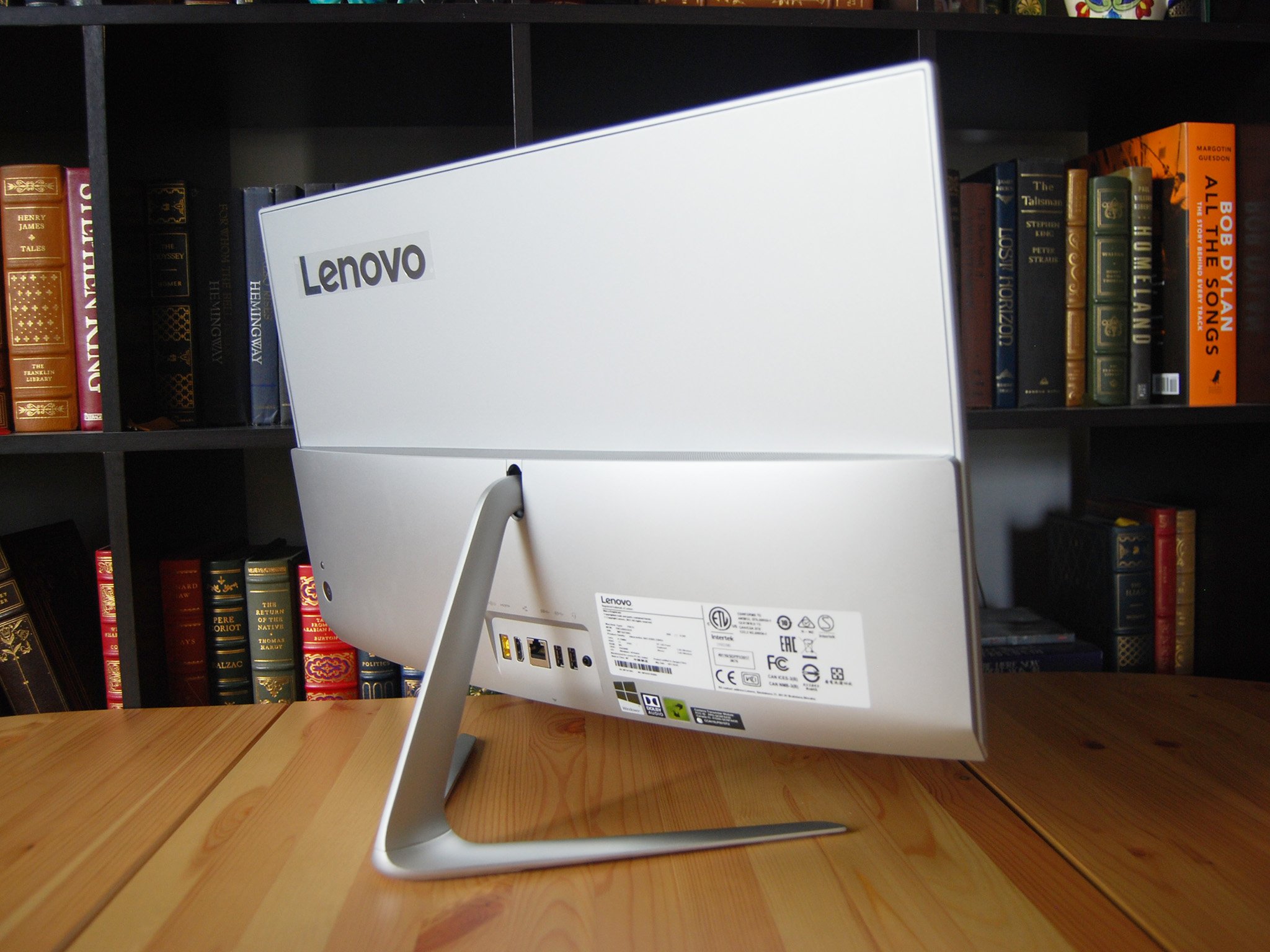
When you first take the IdeaCentre 520S out of its box, it's hard not to remark on how slim it is near the top. Yes, there is some bulk near the bottom to house all the hardware and to mount the stand, but everything is rounded off in a way that makes it seem like a lot less. At its thickest, it's about 1.6 inches, and at its thinnest, it's only about a quarter inch. It fits nicely anywhere a normal monitor would fit, and you don't have to worry about finding space for a PC tower in as well. The plastic chassis is available in a silver color option only.
On the back, to the side of the body, are two buttons: one for power, and one to toggle the display if you want to use the IdeaCentre 520S as a monitor for a different PC. Only have room on your desk for one monitor but want two PCs? Keep a tower below and switch back and forth.
The chassis rotates only one way on its stand — up and down, not left and right — which can be frustrating if you're used to adjusting a standalone monitor with more freedom of movement. Along the bottom edge of the unit is a speaker bar that runs from edge to edge. Despite its size, there are two speakers encased in there. Regardless, they deliver quality sound that doesn't seem hollow, even at loud volume.

Below the speaker bar, on the very bottom of the chassis, is a pop-out, 1080p webcam that has a USB 3.0 port on either side. The placement is odd, and many of you will hate having it looking up your nose during video calls, but the fact that it can be tucked away when not in use keeps the bezel on the display small and eases more paranoid minds. If you can't see the webcam, the webcam can't see you.
Bright and clear
Lenovo IdeaCentre 520S display
The best part of this AIO PC is its 23-inch, 1080p touch display. The predecessor to the 520S, the 510S, was criticized for being too dim, and Lenovo has seemingly taken it to heart. There was no time, even when working in a sunny room, I felt the brightness needed to be more than 75 percent.

The bezel around the display is very slim — only about a quarter inch — and makes watching TV and movies on it very pleasurable. Testing the display revealed great color, with an excellent score of 98-percent sRGB and a 76-percent AdobeRGB. Altogether, the picture is outstanding.
This is a touch display, but I didn't find much use for it — I'd rather use a mouse and keyboard. In testing, it responded well to touch, and the matte finish cut down significantly on unsightly smears and fingerprints.
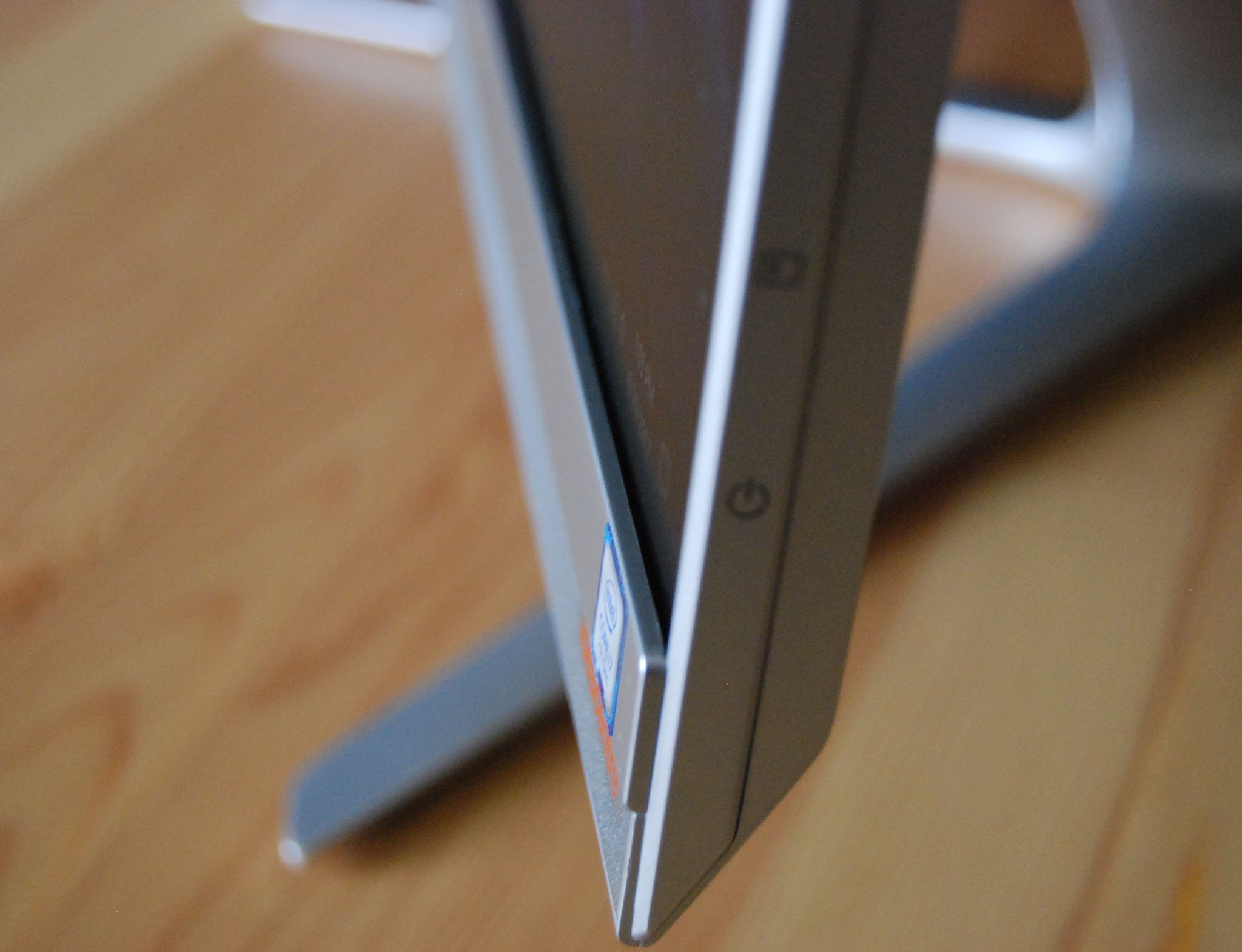
One of the issues I discovered with the touch screen was not immediately apparent. At the bottom of the screen, there's a small opening between the display and the chassis. It seems as though the plastic above the speaker bar was set over the display, and it doesn't quite fit perfectly. When I took a closer look, I noticed some dust and dirt was starting to collect there, and it's very difficult to clean out.
Bring your own keyboard and mouse
Lenovo IdeaCentre AIO 520S ports and peripherals
The IdeaCentre 520S comes with a keyboard and a mouse, but after using each for about an hour, I ditched them. The mouse is similar to the Microsoft Arc mouse in style, but this one from Lenovo is a bit too boxy and wide to fit my relatively large hand comfortably.
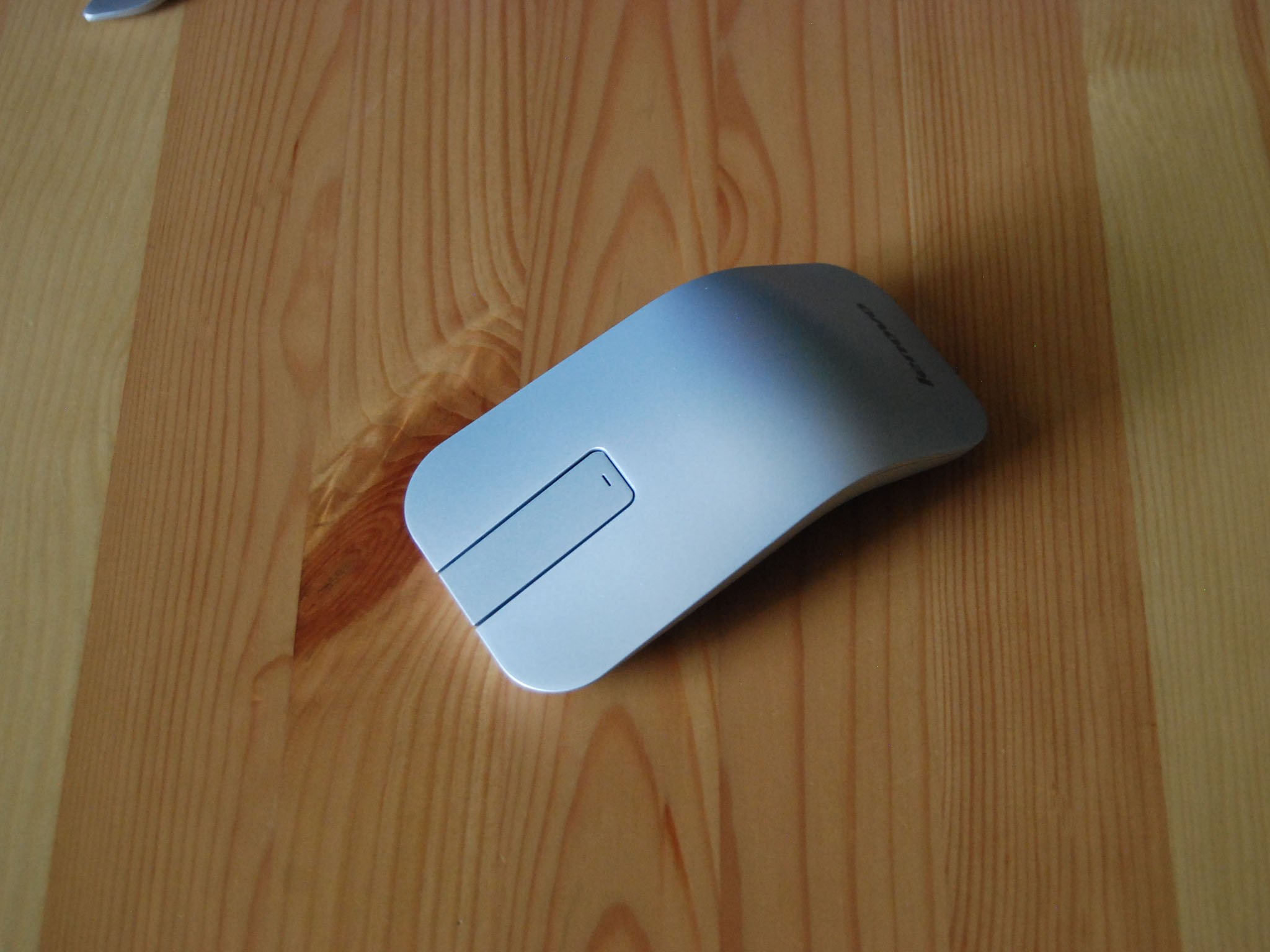
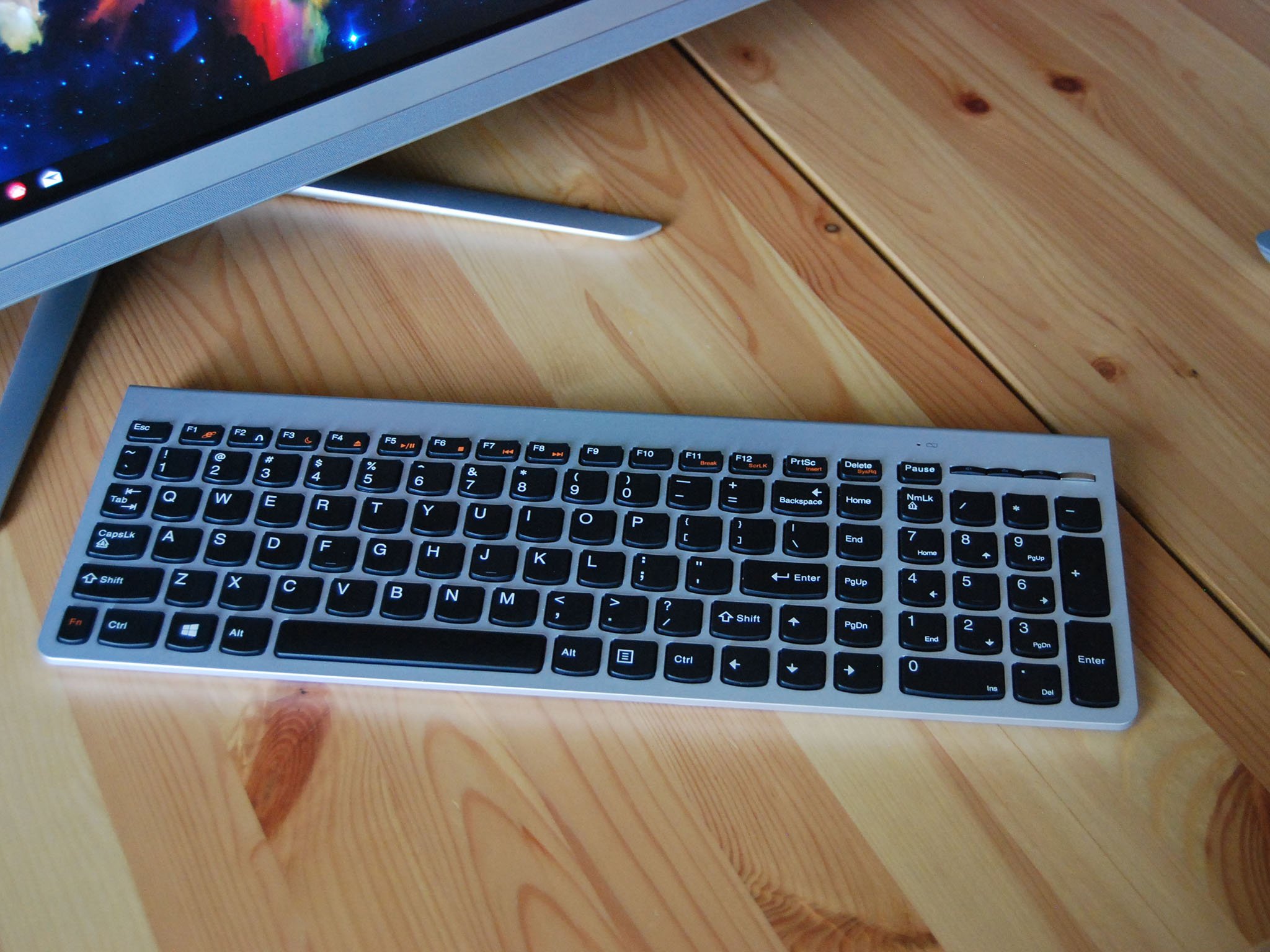
The keyboard, which appeared initially to be modeled just the same as a ThinkPad keyboard with cupped keys, was ultimately a disappointment. You have to press extremely hard on the keys to get them to register, and even then I found myself hitting keys two or three times to get a letter to appear on screen. That's as far as I got with it, even after replacing the batteries, so that's about all I can say. If you pick up this AIO, be sure to have a backup keyboard and mouse on hand.
It's hard to find issue with the ports here. There are four USB-A 3.0, one HDMI 1.4, one RJ45 Ethernet, and a 3.5mm audio jack. While it would be nice to see a USB-C or Thunderbolt 3, the price is the limiting factor. Getting very picky here, the USB ports are pretty stiff, and you have to be right on target if you want to connect. Not a big deal, but a bit frustrating when the majority of ports are on the back of the chassis.
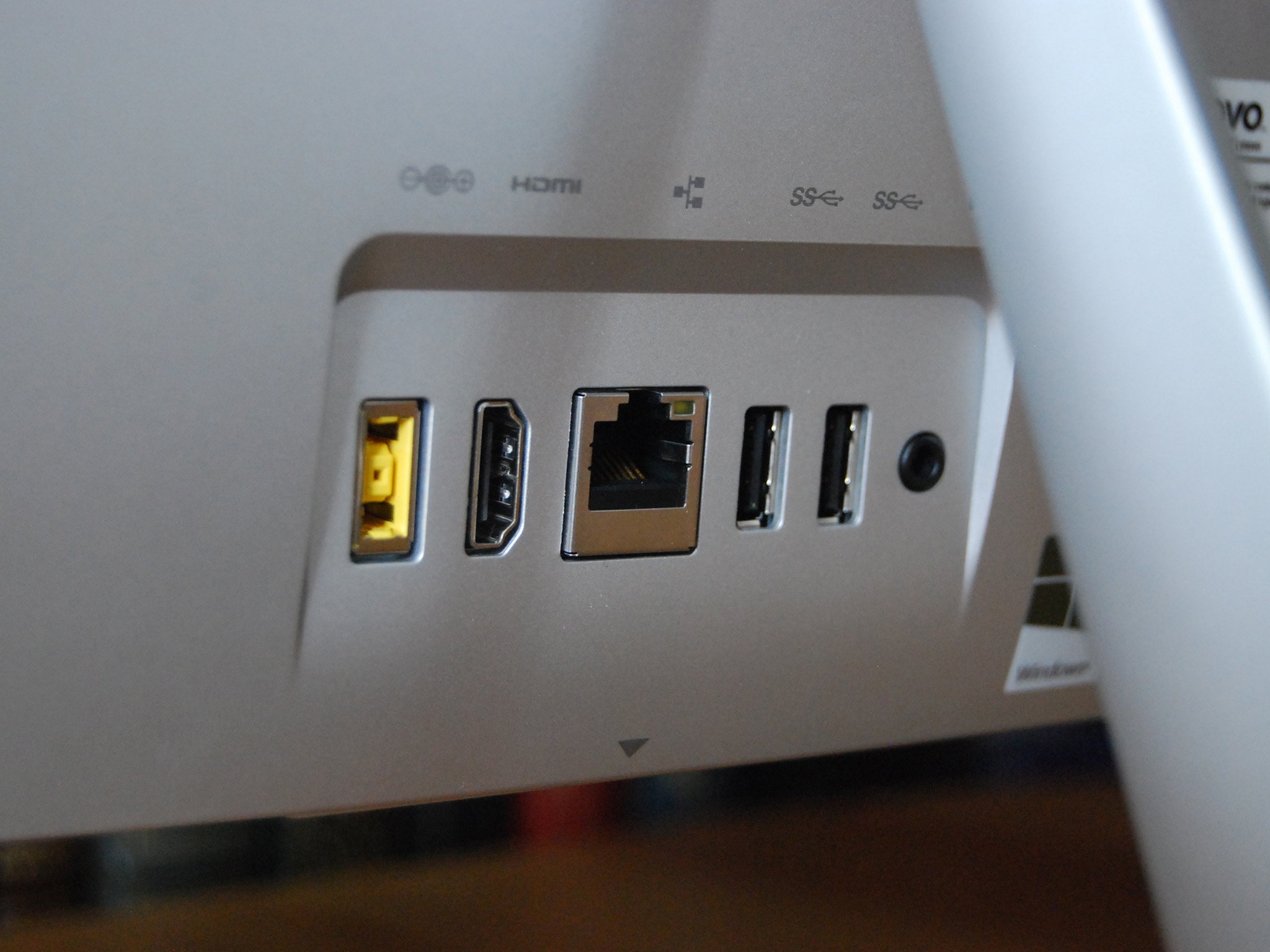
Not bad for the price
Lenovo IdeaCentre 520S performance
This configuration came with an Intel Core i7-7500U processor, 8GB of DDR4 RAM, and a 1TB HDD. I used this AIO as my primary device for about a week, and although it was mostly smooth sailing, there were some noticeable performance hiccups, no doubt related to the low-end HDD.
CPU
Geekbench 4.0 Benchmarks (Higher is better)
| Device | CPU | Single core | Multi core |
|---|---|---|---|
| Lenovo IdeaCentre AIO 520S | i7-7500U | 4,036 | 7,760 |
| HP Envy 34 | i7-7700T | 4,396 | 14,272 |
| Surface Studio | Core i7 | 4,200 | 13,323 |
| Surface Pro 2017 | i7-7660U | 4,513 | 9,346 |
| Surface Laptop | i5-7200U | 3,725 | 7,523 |
| Lenovo ThinkPad T470 | i5-7300U vPro | 4,394 | 8,580 |
| Dell Latitude 5285 | i7-7600U | 4,635 | 9,289 |
| Lenovo ThinkPad X270 | i7-7600U | 4,512 | 8,566 |
| Lenovo X1 Carbon | i5-7300U | 4,139 | 8,311 |
| Samsung Notebook 9 15 Ext | i7-7500U | 4,316 | 8,320 |
| Dell XPS 13 (9360) | i7-6560U | 4,120 | 7,829 |
| HP Spectre 13 | i7-7500U | 4,100 | 7,469 |
| Surface Book | i7-6600U | 3,948 | 7,415 |
The processor here is one that's often used in Ultrabooks thanks to its lower TDP, and it has a base clock speed of 2.70GHz and a turbo clock speed up to 3.50GHz. It performs well enough, and it keeps up with many other Core i7 processors we've tested. When things get tough, however, the fan kicks on and is quite loud.
GPU
Geekbench 4.0 Graphics OpenCL (Higher is better)
| Device | Score |
|---|---|
| Lenovo IdeaCentre AIO 520S | 16,663 |
| Lenovo ThinkPad T470 | 21,276 |
| Dell Latitude 5285 | 21,921 |
| Lenovo ThinkPad X270 | 17,376 |
| Lenovo ThinkPad T470s | 16,635 |
| Lenovo Yoga 720 | 18,185 |
| Lenovo X1 Carbon | 20,932 |
| Dell XPS 13 (9360) | 19,410 |
| Surface Book HD520 | 18,197 |
| Dell Latitude 7280 | 17,827 |
Here we have Intel HD Graphics 620 integrated with the CPU. While you won't be able to use this PC for any intensive gaming, it can handle some light to medium stuff quite well. Just don't expect The Witcher 3 on Ultra.
PCMark
PCMark Home Conventional 3.0
| Device | Score | Comparison |
|---|---|---|
| Lenovo IdeaCentre AIO 520S | 2,454 | Better than 34 percent of all results |
| Lenovo ThinkPad T470 | 3,103 | Better than 62 percent of all results |
| Dell Latitude 5285 | 3,079 | Better than 57 percent of all results |
| Lenovo ThinkPad X270 | 3,009 | Better than 57 percent of all results |
| Lenovo ThinkPad T470s | 2,576 | Better than 40 percent of all results |
| Lenovo Yoga 720 | 2,717 | Better than 46 percent of all results |
| Lenovo X1 Carbon Core i5 | 2,965 | Better than 57 percent of all results |
| Samsung Notebook 9 15 Ext | 2,998 | Better than 57 percent of all results |
| Dell XPS 15 (9560) | 3,534 | Better than 71 percent of all results |
| Dell Latitude 7280 | 2,829 | Better than 52 percent of all results |
| HP Spectre x360 15 | 2,472 | Better than 41 percent of all results |
The PCMark Home Conventional test is important because it measures how well a bunch of your system components work together in a variety of everyday tasks. This AIO scored in the same area as a lot of the other devices we've tested. It will serve you well for basic, everyday tasks.
HDD
CrystalDiskMark (Higher is better)
| Device | Read | Write |
|---|---|---|
| Lenovo IdeaCentre AIO 520S | 102.1 MB/s | 95.84 MB/s |
| Lenovo ThinkPad T470 | 1,079 MB/s | 716.1 MB/s |
| Dell Latitude 5285 | 1,300 MB/s | 1,113 MB/s |
| Lenovo ThinkPad X270 PCIe | 1,049 MB/s | 636.9 MB/s |
| Lenovo ThinkPad T470s | 1,557 MB/s | 1,333 MB/s |
| Lenovo Yoga 720 | 1,904 MB/s | 1,169 MB/s |
| Lenovo X1 Carbon | 1,518 MB/s | 1,188 MB/s |
| Samsung Notebook 9 15 Ext | 1,365 MB/s | 1,213 MB/s |
| Dell Latitude 5480 SATA | 443 MB/s | 469 MB/s |
| Razer Blade Pro | 2,571 MB/s | 2,467 MB/s |
| Dell XPS 15 (9560) | 2,207 MB/s | 1,628 MB/s |
| Dell XPS 13 (9360) | 1,287 MB/s | 794 MB/s |
| HP Spectre x360 15 | 1,128 MB/s | 862 MB/s |
| Surface Book | 1,018 MB/s | 967 MB/s |
| Dell Latitude 7280 SATA | 428 MB/s | 412 MB/s |
| Dell XPS Tower SE (HDD) | 133 MB/s | 150 MB/s |
The HDD read and write speeds here are abysmally low, and it shows in everyday use. Everything from installing and launching apps to actual performance while using apps is affected.
What it all means
Lenovo IdeaCentre 520S review: Conclusion
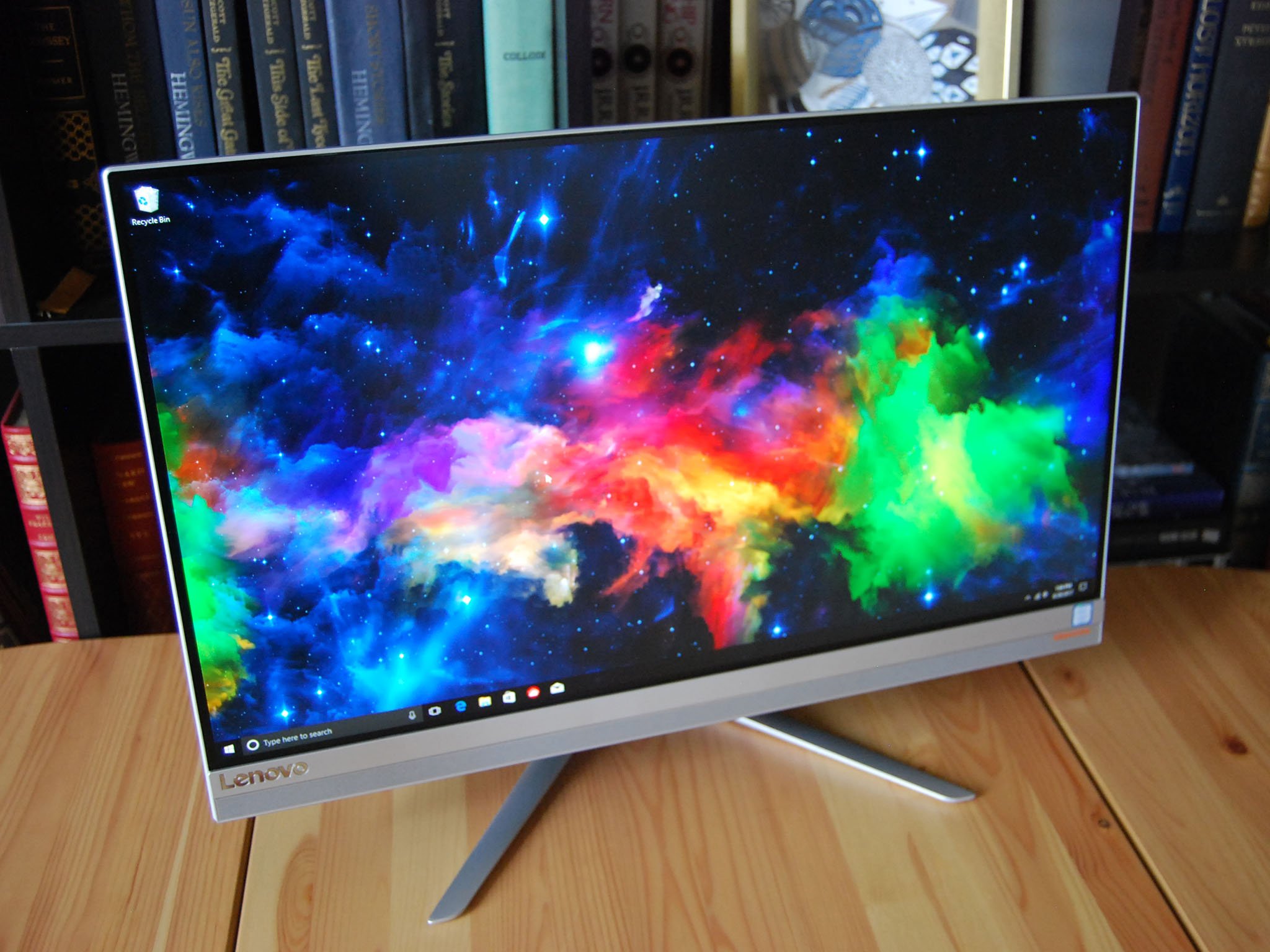
The Lenovo IdeaCentre 520S is, without a doubt, an attractive device. Its chassis has curving lines on the back, and at the top, it's slim enough to give pause. The best part, however, is the bright, colorful touch display that has barely any bezel at all.
At first glance, it's easy to gloss over the flaws. However, once you start using it regularly, a few negative aspects appear. The keyboard will drive you nuts until you replace it (you might like the mouse if it fits your hand), the budget HDD causes hiccups in performance, and you start to see some design choices where corners were cut to keep the cost down.
If, however, you're in a situation where as much space needs to be saved as money, you can probably look past the flaws. The 520S still does well for everyday tasks (just don't throw anything heavy at it), and the display really is brilliant.
Pros:
- Compact design.
- Bright, colorful touch display.
- Speakers offer full sound.
- The price is right.
Cons:
- Very slow hard-disk drive.
- Included keyboard and mouse aren't worth your time.
- Budget price shows in some spots.
- Very loud fan.

Cale Hunt brings to Windows Central more than eight years of experience writing about laptops, PCs, accessories, games, and beyond. If it runs Windows or in some way complements the hardware, there’s a good chance he knows about it, has written about it, or is already busy testing it.
